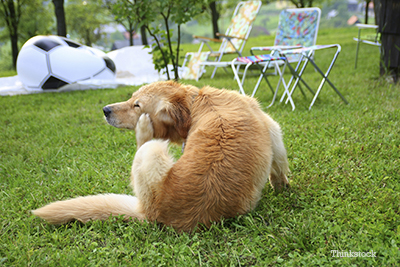Overview
Cheyletiellosis; no, it is not a Stephen King horror story—there is such a thing as “walking dandruff.”
Walking dandruff is actually a form of mange, a skin disease caused by the Cheyletiella mite. This type of mange is particularly creepy because of its presentation. The mites move around under the scales of a dog’s skin, giving an appearance of dandruff that is actually alive and moving. Though mites can inhabit the entire body, they are most noticeable on the back of your pet.
What is even creepier about cheyletiellosis is the fact that it’s a contagious and zoonotic disease, meaning it can be spread from dog to cat to person by close contact or via a shared environment. (To learn more about this bug, read an article about it by the Companion Animal Parasite Council.)
(To learn more about this bug, read an article about it by the Companion Animal Parasite Council.)
Puppies tend to be more prone to cheyletiellosis, especially those from places where there are lots of animals, such as humane societies, boarding facilities, and puppy mills.
Symptoms
Symptoms are varied and may include:
- Itchiness
- Dandruff or scales, especially along the back
- Hair loss
- Redness of the skin
Diagnosis
To make a diagnosis, your veterinarian will perform a physical exam, looking for the characteristic dandruff and mites on your dog’s skin. He/she may use a magnifying glass or microscope to examine your pet’s skin or fur, looking for dandruff flakes that appear to have legs. Your veterinarian may also perform a skin scraping to rule out additional diseases, such as scabies.
Treatment
To treat walking dandruff, you need to get rid of the mites on your dog and in the environment. Your veterinarian can prescribe a very effective treatment for this problem, so contact her or him as soon as possible. Parasite-control products are usually effective if used appropriately and for a prolonged period. Make sure to treat all animals in your home to prevent reinfection.
Prevention
There are some simple steps you can take to prevent walking dandruff. These include reducing your dog’s exposure to infested animals, keeping his bedding and environment clean and free of parasites, and checking him often for anything out of the ordinary.
If you have any questions or concerns, you should always visit or call your veterinarian – they are your best resource to ensure the health and well-being of your pets.
